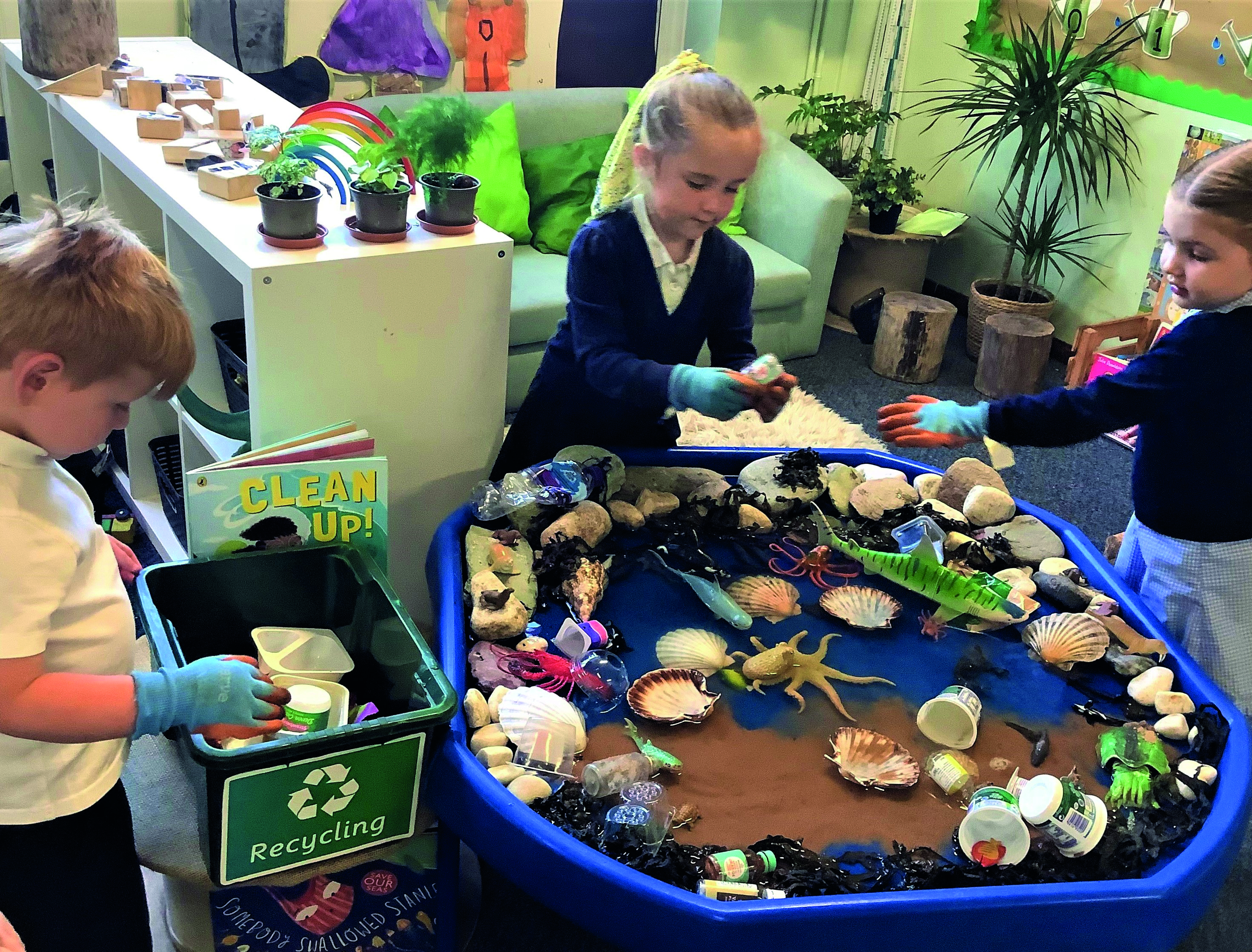
The natural world, and how to take care of it, is a subject with which children have a natural affinity. Children can apply what they have been taught about environmental issues through enhancements. Books are a good way of gauging and deepening their understanding, and can make the learning more memorable.
Linking learning to books and then adding enhancements related to the story can be an effective way to make what has been taught relevant and bring it to life. Our nursery is situated in a coastal town, and we wanted to teach the children about the importance of keeping our beaches and oceans clean and that we can all make a difference. We talked about examples of what they could do when they go to the beach, for example where to put their food wrappers after a picnic. We linked this learning to two books, Clean Upby Nathan Bryon and Somebody Swallowed Stanleyby Sarah Roberts. Both books brought up the issue of litter on the beach and the effect this can have on sea creatures.
 Later in the week an enhancement appeared in the small-world area. It was a tuff tray containing sea-life toys and a range of natural objects such as sand, water, seaweed, and a variety of stones and shells. Sadly, the children found that there was also lots of rubbish in it. ‘We need to take the rubbish out,’ one child said. ‘Here is the bin, let's put it in there,’ said another. The tray had a table next to it with some gloves, a copy of the books we had shared, and a small recycling bin. The children were very engaged with this enhancement and decided to take the rubbish out without an adult guiding them, demonstrating that they understood that rubbish was bad for the sea creatures.
Later in the week an enhancement appeared in the small-world area. It was a tuff tray containing sea-life toys and a range of natural objects such as sand, water, seaweed, and a variety of stones and shells. Sadly, the children found that there was also lots of rubbish in it. ‘We need to take the rubbish out,’ one child said. ‘Here is the bin, let's put it in there,’ said another. The tray had a table next to it with some gloves, a copy of the books we had shared, and a small recycling bin. The children were very engaged with this enhancement and decided to take the rubbish out without an adult guiding them, demonstrating that they understood that rubbish was bad for the sea creatures.
Another environmental issue that the children learnt about was about the importance of trees. The books that we used to help teach the concepts were The Last Wolfby Mini Grey and That Leopard is So Rude by Steve Day. Through these stories we discussed the impact that chopping down the forest can have on the animals that live in them. When asking the children what they thought people could do about this problem, a child answered, ‘Put the trees back up again.’ This led to us discussing that although it was not possible to put the trees back up again once they have been cut down, planting new trees is a good idea.
Later, a forest tuff tray was in the classroom with a variety of animal toys, tree branches and twigs, leaves, rocks, wooden blocks and a bulldozer to prompt discussion. While playing with the enhancement, children made comments such as ‘the people shouldn’t knock down the trees, let's plant some more’ as they used the wooden blocks to represent the new trees, placing leaves carefully on top – ‘the animals are happy when the trees are there’.
The Tin Forest by Helen Ward and Wayne Anderson is a beautiful book that can be adapted to be used with children of a wide range of ages. After reading the story to the nursery children, we talked about how the old man didn’t give up and made something beautiful out of the rubbish. The tin forest he created made a big difference as it attracted some birds and gradually a real forest grew around it. When we went for a walk in our woods on the school grounds, the children were surprised and intrigued to discover a tin tree, some animal puppets, some animal fur strips, and a copy of The Tin Forestbook. They played with the puppets or put on the fur strips and played imaginatively, pretending to be animals in the forest. ‘I am the stripy tiger and I love the forest,’ a child commented, putting the fur around her neck. ‘Look at the tin tree, it is shiny,’ one child observed, ‘did the old man make it?’ ‘My owl likes the normal tree the best, he falls off the tin tree,’ said another.
The enhancement in the woods encouraged the children to think about natural and man-made materials and which is best for the animals, as well as gain a deeper understanding of the story, and develop their communication and language skills.
Amy Jackson is EYFS specialist leader of education and teacher at Ormiston Herman Academy, Gorleston









